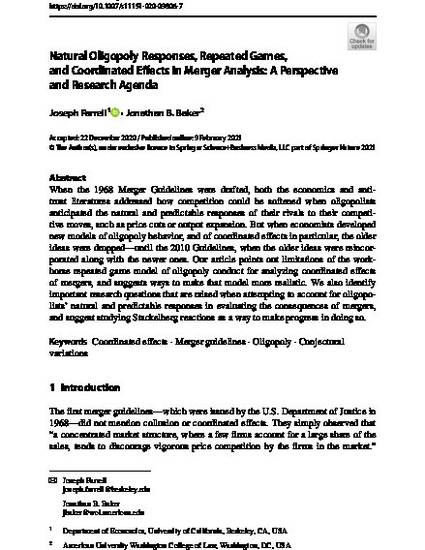
Article
Natural Oligopoly Responses, Repeated Games, and Coordinated Effects in Merger Analysis: A Perspective and Research Agenda
Review of Industrial Organization
(2021)
Abstract
When the 1968 Merger Guidelines were drafted, both the economics and antitrust literatures addressed how competition could be softened when oligopolists anticipated the natural and predictable responses of their rivals to their competitive moves, such as price cuts or output expansion. But when economists developed new models of oligopoly behavior, and of coordinated efects in particular, the older ideas were dropped—until the 2010 Guidelines, when the older ideas were reincorporated along with the newer ones. Our article points out limitations of the workhorse repeated game model of oligopoly conduct for analyzing coordinated efects of mergers, and suggests ways to make that model more realistic. We also identify important research questions that are raised when attempting to account for oligopolists’ natural and predictable responses in evaluating the consequences of mergers, and suggest studying Stackelberg reactions as a way to make progress in doing so.
Keywords
- Coordinated Effects,
- Merger guidelines,
- Oligopoly,
- Conjectural Variation,
- Economics
Disciplines
Publication Date
2021
DOI
https://doi.org/10.1007/s11151-020-09806-7
Citation Information
Jonathan B. Baker. "Natural Oligopoly Responses, Repeated Games, and Coordinated Effects in Merger Analysis: A Perspective and Research Agenda" Review of Industrial Organization Vol. 58 Iss. 1 (2021) p. 103 - 141 Available at: http://works.bepress.com/jonathan_baker/218/
